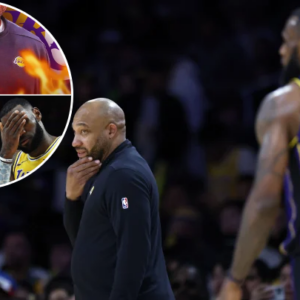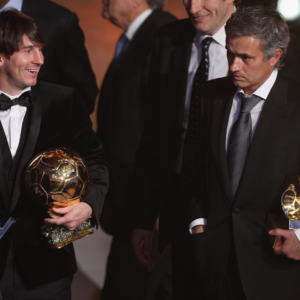The Warriors allowed 22 fast break points to the Mavericks on Wednesday night

In a team film session before their game in Dallas, Steve Kerr had a clear objective: hammer home transition defense.
Kerr showed nine straight minutes of film from the third quarter of Golden State’s previous win over the Spurs, a team source said. In that stretch, the Warriors hustled back on defense, starting from the nail and fanning out from there. They communicated to avoid getting caught in mismatches and forced San Antonio to beat their set defense.
The Warriors won the quarter, 32-18. The film showed what the Warriors are capable of in transition.
But the squad’s effort getting back on defense hasn’t been consistent enough, even as the season enters its most important chapter and the Warriors are fighting for playoff positioning. Players and coaches have harped on the topic, but issues continue to crop up.
“I was much more concerned with the lack of urgency in transition the other night in Dallas,” Steve Kerr said after the Warriors’ practice Friday at UCLA. “Just way too many possessions when they got behind our defense. Dunked the ball, lobs, easy points. To be a good team, you have to take the easy stuff away. I thought our halfcourt defense was really good, but transition was very poor.”
But Golden State didn’t provide enough resistance in transition, allowing easy buckets at the rim.
“I think it’s just communication of who has the ball, and then building from the rim out,” rookie guard Brandin Podziemski said after the 109-99 loss. “A lot of the times, Kyrie (Irving) would take it down and just throw it in to (Dereck) Lively because there was a mismatch or whatnot. But we’ve got to do a better job of communication and simply just sprinting back. Think if you get five guys (back down) the floor before they get their five, I think we’ve got a good chance every time to at least make them run something in the half-court.”
On one play against Dallas, Irving corralled a defensive rebound under his basket and strolled down the middle of the court, barely impeded, for a layup. Jonathan Kuminga was charged with picking up the point guard, but his defensive stance was too upright to stay in front of Irving.
As Warriors analyst Joe Viray pointed out on Twitter/X, the play was eerily similar to a Kuminga miscue in San Antonio the previous game, when the wing didn’t stop the ball.
On plays like that, the difference needs to be simply more intensity and focus. At this point of the season, there’s no real excuse for a lack of urgency.
“It’s effort, but it’s also awareness,” Kerr said. “You can get back, but if you’re not aware of the weak side guy running behind you, that’s awareness. So it’s a combination.
“We tell our guys all the time: The first three steps are the most important. As soon as you see a possession change, those first three steps should be explosive, and then at halfcourt, you’ve got to turn and locate the ball, look at the most dangerous people. The most dangerous guy is always the guy going to the rim. We let that guy get behind us too many times.”
Kuminga is not the only Warrior who has had lapses. With 53.5 seconds left in the first half against Dallas, Kuminga converted a layup and tripped on someone’s foot along the baseline, taking him out of the play. On the other end, Josh Green snuck behind every Warrior and was rewarded with an alley-oop dunk.
On that play, rookie Trayce Jackson-Davis was jogging back after the make. Andrew Wiggins was stuck on the perimeter, charged with picking up Doncic off the ball. But Klay Thompson and Chris Paul were also stationed outside the 3-point arc, allowing Green to have 20 feet of daylight.

There are additional factors beyond effort that can impact transition defense for any team. Live-ball turnovers create adverse situations. And if too many players crash for an offensive rebound without hauling one in, the floor balance gets out of sync.
In 12 games since the All-Star break — a stretch in which the Warriors have largely played well — Golden State ranks 25th in the NBA in opponents’ fast break points per game (16.9).
With the Warriors fighting to advance out of the 10 seed, that number should be getting better, not worse. Every game matters in the cluttered West. Every game should be intense, Kerr said this week, and one of the areas to apply that intensity most should be in transition.
Up next: a nationally televised tilt against the Lakers, who are a game ahead of Golden State in the play-in standings. The Lakers rank third in fast-break scoring, averaging 16.9 points per game.
If the Warriors don’t commit to tracking back on defense, they’ll have a hard time slowing them down.
News
Test đẩy bài từ cms
Test đẩy bài từ cms, xóa sau khi dùng.
HOT BELL RINGING: LeBron James may have just revealed ideal Darvin Ham replacement for Lakers
It is no secret that Darvin Ham’s future with the Los Angeles Lakers might be up in the air with how the 2023-24 season has played out. Despite getting mostly healthy seasons from LeBron James and Anthony Davis, Ham…
Stephen Curry Explains How Social Media Influenced His Pregame ‘Tunnel Walk’ Aesthetic: “All Those Eyeballs on You”
SAN FRANCISCO, CALIFORNIA – MARCH 18: Stephen Curry #30 of the Golden State Warriors points to his teammates during their game against the New York Knicks in the second half at Chase Center on March 18, 2024 in San Francisco,…
How name dropping Lionel Messi saved an Israeli grandmother from Hamas
A man walks behind a glass with bullet holes following the deadly October 7 attack by gunmen from Palestinian militant group Hamas from the Gaza Strip, in Kibbutz Nir Oz in southern Israel Nov 21, 2023. PHOTO: Reuters file TEL AVIV — “I’m…
Jose Mourinho reveals if he wants to manage Inter Miami’s Lionel Messi
Jose Mourinho has now commented on if he would one day like to manage Inter Miami superstar Lionel Messi. The former Real Madrid and Chelsea manager has often let his opinion known on the Argentine forward, with Mourinho clearly a…
Eden Hazard names who is the greatest between Lionel Messi and Cristiano Ronaldo
Eden Hazard has weighed in on who is the greatest player of all time between Inter Miami’s Lionel Messi and Portuguese international Cristiano Ronaldo. The debate is one that almost feels as old as soccer itself, with every support firmly…
End of content
No more pages to load










